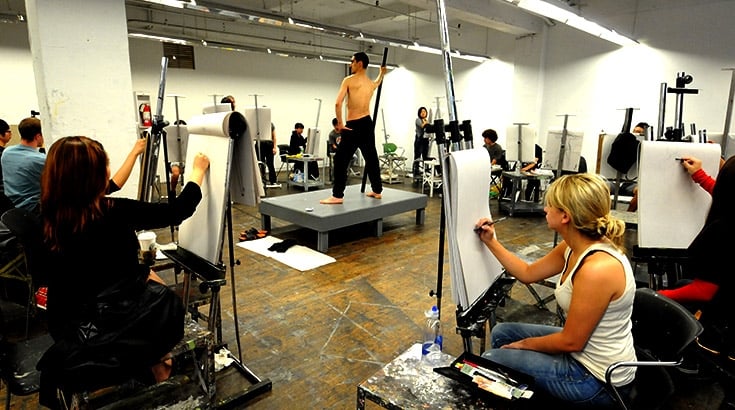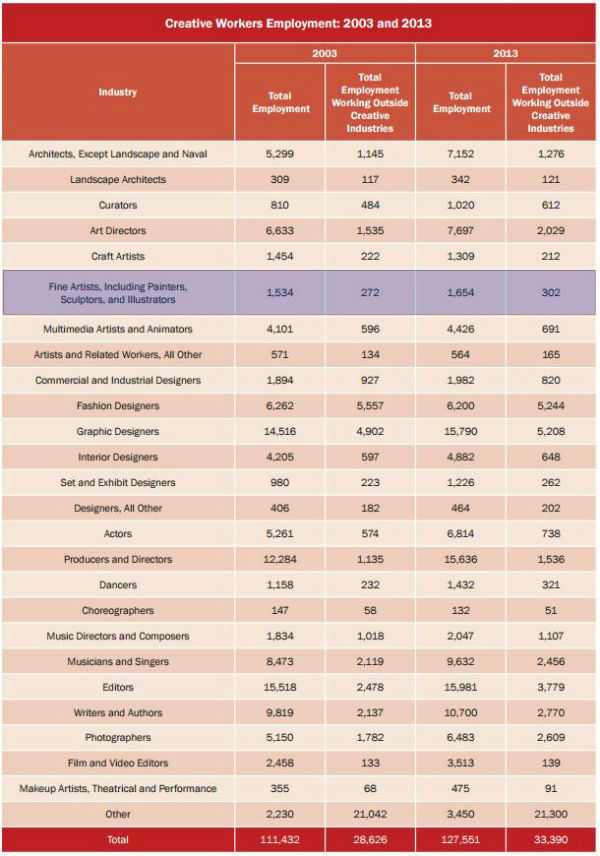Art World


Why You Should Be Suspicious of the 'Creative Economy'

A life drawing class at School of Visual Arts
Photo: Courtesy SVA
Photo: Courtesy SVA
One-thousand six-hundred fifty-four.
I'm not teaching this semester, but if I were, that is the one number that I would want everyone to remember.
It is the reported number of “fine artists" sustained by the booming visual art industry in New York City (as of two years ago), according to Creative New York, a 2015 report on the health of Gotham's “Creative Economy."

The top "Creative Economy" jobs in New York (with "Fine Artists" highlighted)
Image: Courtesy Center for an Urban Future
Image: Courtesy Center for an Urban Future
The School of Visual Arts enrolls about 400 in its "Fine Arts" section (graduate and undergraduate). Pratt Institute has 374. Parsons, the New School for Design, is training about 114 undergraduates and 46 grads. Cooper Union has about 280 students in its art programs, while NYU's Steinhardt school enrolls about 220 art undergraduates, plus a few dozen more in its graduate programs.
That already takes us to more than 1,400 art students, and these are just the programs I can name off the top of my head. It follows that at any given moment in New York there are many, many more artists in the process of being added to the pool than there are successful artists who have “made it" in the entire city.
:::::||CONTINUE READING||---»-» https://news.artnet.com/art-world/creative-economy-numbers-new-york-330374

